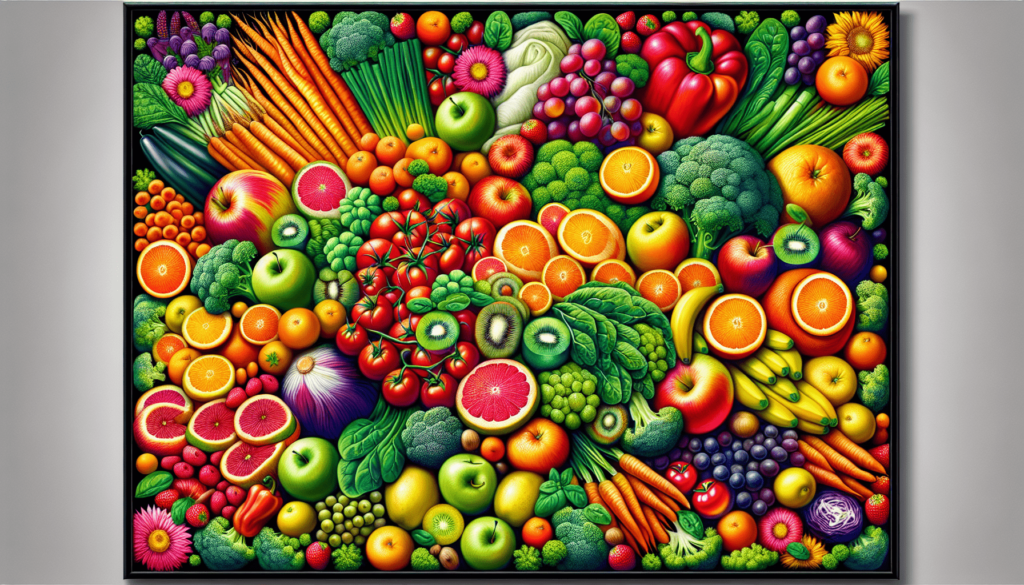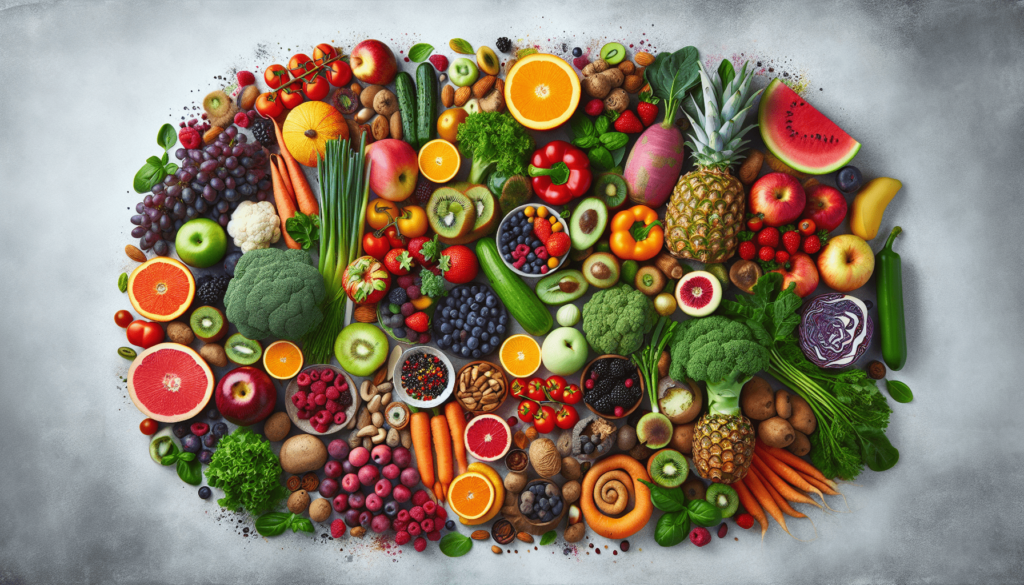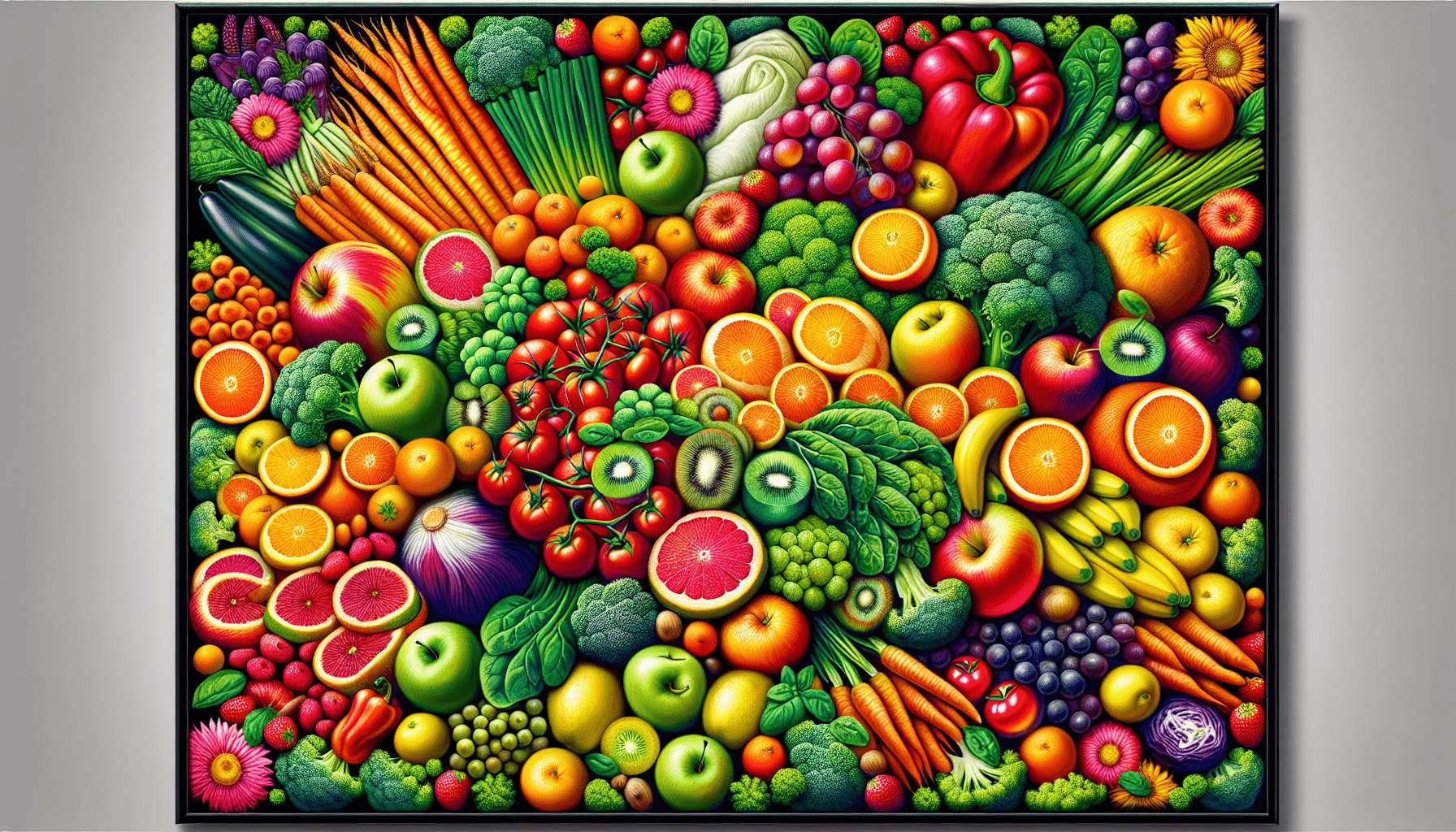Have you ever wondered how you can improve your overall well-being through the foods you eat? Cultivating holistic health through seasonal eating can be a great way to support your physical, mental, and emotional health. Let’s explore how you can incorporate seasonal foods into your diet to achieve optimal wellness.

Understanding Seasonal Eating
Eating seasonally means consuming foods that are grown and harvested at specific times of the year. This practice allows you to enjoy fruits, vegetables, and other foods when they are at their peak in terms of flavor and nutritional value. By eating seasonally, you can also support local farmers and reduce your carbon footprint by purchasing products that don’t have to be transported long distances.
Benefits of Seasonal Eating
By choosing to eat foods that are in season, you can reap several health benefits. Seasonal produce is often more nutrient-dense, as it is picked at its peak ripeness. This means that you are getting the most nutritional bang for your buck when you consume seasonal fruits and vegetables. Additionally, seasonal foods are fresher and have a more vibrant flavor, making them more enjoyable to eat.
Eating with the Seasons
In order to eat with the seasons, it’s important to know which foods are typically harvested during each time of year. Different climates and regions will have varying seasonal produce, so it’s important to pay attention to what’s available locally. Fruits and vegetables that are in season are often more affordable and can be found in abundance at farmers markets and grocery stores.
Spring
During the spring months, you can enjoy a variety of fresh greens like spinach, lettuce, and arugula. Asparagus, strawberries, and peas are also in season during the spring and make delicious additions to your meals. These foods are not only tasty but also rich in essential nutrients like vitamin C and fiber.
Summer
Summer is the time for vibrant and juicy fruits like berries, melons, and stone fruits. Vegetables like tomatoes, zucchini, and corn are also abundant during this season. These foods are packed with vitamins, minerals, and antioxidants that can help keep your body healthy and strong during the warmer months.
Fall
As the weather starts to cool down, fall brings an abundance of hearty fruits and vegetables. Apples, pumpkins, squash, and sweet potatoes are all in season during the fall. These foods are rich in vitamins A and C, as well as fiber, which can help support your immune system and keep you feeling satisfied and energized.
Winter
During the winter months, you can enjoy citrus fruits like oranges and grapefruits, as well as root vegetables like carrots and parsnips. Cruciferous vegetables like kale and Brussels sprouts are also in season during the winter and can provide your body with important nutrients like vitamin K and folate.
Incorporating Seasonal Foods into Your Diet
Now that you know which foods are in season during each time of year, it’s time to start incorporating them into your diet. Here are some tips to help you make the most of seasonal eating:
Shop at Farmers Markets
Farmers markets are a great place to find fresh, locally grown produce that is in season. By shopping at farmers markets, you can support small-scale farmers and get access to high-quality foods that are full of flavor. Plus, you’ll be able to chat with the farmers themselves and learn more about where your food comes from.
Join a Community Supported Agriculture (CSA) Program
CSA programs allow you to purchase a share of a local farm’s harvest, typically on a weekly or bi-weekly basis. This is a great way to get a variety of seasonal produce directly from the source. Many CSA programs also offer add-ons like eggs, meat, and dairy products, making it easy to get all of your grocery needs in one place.
Grow Your Own Food
If you have the space and ability, consider starting a small garden in your backyard or on your balcony. Growing your own fruits, vegetables, and herbs is a rewarding way to connect with your food and ensure that it is fresh and free from harmful chemicals. You can start small with a few herbs or tomatoes and expand your garden as you become more comfortable.
Meal Prep with Seasonal Ingredients
Meal prepping is a great way to ensure that you have healthy and delicious meals ready to go throughout the week. By using seasonal ingredients in your meal prep, you can take advantage of the best-tasting and most nutritious foods that are available. Try batch-cooking soups, stews, or salads with seasonal produce for quick and easy meals.
Balancing Your Plate with Seasonal Foods
When it comes to eating seasonally, it’s important to ensure that you are getting a balanced mix of macronutrients and essential vitamins and minerals. Here’s how you can create a well-rounded plate with seasonal foods:
Include a Variety of Colors
Different colored fruits and vegetables offer a range of unique nutrients that can benefit your health. Aim to include a variety of colors on your plate, such as reds, greens, yellows, and purples. For example, a colorful salad with mixed greens, cherry tomatoes, bell peppers, and purple cabbage is not only visually appealing but also packed with vitamins and antioxidants.
Incorporate Protein Sources
In addition to fruits and vegetables, make sure to include protein-rich foods in your meals. Lean sources of protein like chicken, fish, tofu, beans, and lentils can help keep you feeling full and satisfied. Consider adding grilled chicken to a summer salad or tossing chickpeas into a winter stew for an extra boost of protein.
Choose Whole Grains
Whole grains like quinoa, brown rice, and oats are excellent sources of fiber, which can help support digestion and keep you feeling full. Swap out refined grains like white bread and pasta for whole grain options to increase the nutritional value of your meals. Try adding quinoa to a Buddha bowl or using whole wheat pasta in a seasonal primavera dish.

Listening to Your Body
As you begin to eat more seasonally, pay attention to how different foods make you feel. Your body is unique, and what works for someone else may not work for you. If you notice that certain foods are causing digestive issues, bloating, or fatigue, consider eliminating or reducing them from your diet. Focus on eating foods that make you feel energized, satisfied, and nourished.
Experiment with New Flavors
Seasonal eating is a great opportunity to try new fruits, vegetables, and herbs that you may not have had before. Challenge yourself to experiment with different flavors and textures to keep your meals interesting and enjoyable. You may discover a new favorite ingredient or recipe that becomes a staple in your seasonal eating routine.
Stay Hydrated
Proper hydration is essential for maintaining optimal health, especially during the warmer months. Water-rich fruits and vegetables like cucumbers, watermelon, and leafy greens can help keep you hydrated and support your body’s natural detoxification processes. Aim to drink plenty of water throughout the day and incorporate hydrating foods into your meals and snacks.
Conclusion
Cultivating holistic health through seasonal eating is a powerful way to nourish your body, mind, and soul. By choosing foods that are in season, you can support your local community, reduce your environmental impact, and enjoy the many health benefits that come from eating fresh, nutritious foods. Start small by incorporating a few seasonal ingredients into your meals each week and gradually build up to a fully seasonal diet. Your body will thank you for it!

